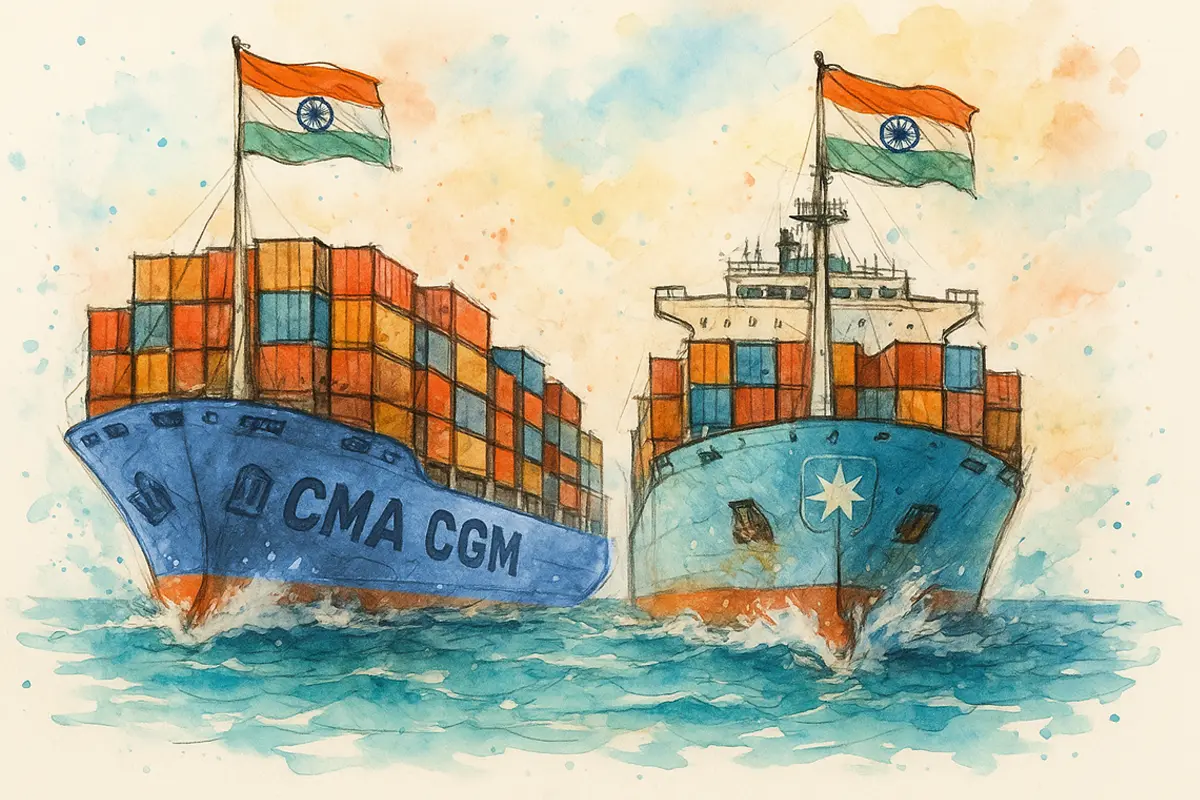
Indian maritime sector is strengthening its position in the global shipping framework. AP Moller-Maersk’s decision to transfer two container ships to the Indian flag is a concrete step in this direction.
According to regulatory filings, Maersk Vilnius (1810 TEU) and Maersk Vigo (1740 TEU) has been transferred to Indian flag under Maersk Bharat IFSC Private Limited, an entity based in GIFT City. The development places Maersk among a growing group of major shipping companies aligning elements of their fleet with the Indian jurisdiction.
The strategic communication of changing the flag
Historically, India has acted as a market of origin and consumption of goods without a commensurate share of Indian-flagged trade tonnage. The movement of a global liner highlights three key trends:
- India’s efforts to create a more competitive flag regime are being recognised
- GIFT City is emerging as a viable hub for ship ownership and financial structures
- Regulatory and compliance expectations around the world are causing re-evaluation of flag choices
These factors collectively strengthen India’s profile as a credible option for ship registration.
CMA CGM became the flagship CMA CGM Vitoria in India earlier this year and is involved in the development of additional capacity, including India-built twin-fuel container ships. This reflects the growing interest of operators beyond traditional Indian operators.
Policy alignment with national goals
Increasing Indian-flagged vessels supports long-term strategic priorities:
- Increasing share of tonnage under Indian control and under Indian flag
- Supporting shipbuilding and life cycle capability through partnerships such as Cochin Shipbuilding
- Development of financial and marine service clusters in Gift city
- Improving operational self-reliance and global connectivity
- Prepare for internal risk and liability management frameworks, including future P&I structure
These measures are part of a concerted effort to increase India’s maritime competitiveness.
Insurance and liability considerations
Discussions on the creation of an Indian Protection and Indemnity (P&I) club continue to emphasize the need for adequate tonnage to support actuarial and underwriting requirements. The addition of major carrier ships would help provide the scale required for such a solution.
Impact on the supply chain ecosystem
The potential consequences of increasing tonnage under the Indian flag are:
- More local financing and chartering opportunities
- Reduce reliance on foreign jurisdictions for repair, maintenance and certification
- Improved alignment of disputes, compliance, and documentation requirements across Indian legal frameworks
- Opportunities for in-house service providers in crew management, classification and digital compliance
- Strengthening competition in global transport markets due to judicial efficiency
These effects will gradually materialize as more assets are brought under Indian regulatory systems.
Sustainable development
To maintain momentum, India must ensure:
- Transparent and stable regulatory processes
- Affordable flag related services
- Simple digital and operational procedures for ship owners
Ongoing reforms will determine India’s ability to absorb additional tonnage from international operators.
conclusion
The re-flagship of the two vessels by Maersk represents a measurable change in the way global shipping companies interact with the Indian maritime sector. This development, along with growing investment and operational alignment by lines such as CMA CGM, supports India’s aim to strengthen its role in shipping governance and global capability.
India’s progress is gradual and based on structural improvements. Continued policy stability and competitiveness will influence more global operators to adopt the Indian flag as part of their long-term fleet strategy.